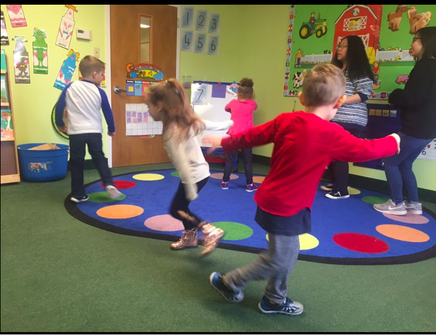 By Sophia Kim As October rolls around, most CRN students are finally settled into their classes and daily routines. At this point, many may be looking for some extracurricular activities that they would enjoy participating in. One club at our school that you may not be familiar with is the American Heart Association Club. The AHA Club was introduced to CRN late last school year. It promotes heart health to children in our community and mainly focuses on emphasizing the importance of healthy exercise and eating habits to prevent heart conditions. The club visits daycares in our community about every other month in order to teach children through hands-on activities. Founder and president of the club Sanjana Harihar says that the club gives students an opportunity "to positively reinforce healthy habits in the kids [they] meet at the daycares." In past daycare visits, members of the club participated in “food sorts” with the kids to teach them about choosing healthy meals and games such as freeze-dance to encourage physical activity. Harihar says that she was prompted to form the club because she has loved ones who struggle with heart disease. She believes that educating young children in particular is a valuable experience because it can help them “build strong habits that will benefit their heart health in the future.” If you are interested in joining the American Heart Association Club, contact Sanjana Harihar through her school email address or Ms. D-V from the library. The club meets once a month in the library. Here are some tips that can help you easily add healthy heart habits into your daily life:
0 Comments
Congratulations Class of 2019! Click here for the 2019 matriculation list or use the link at the top of the page.
 By Madison O’Leary It is common knowledge that many teenagers experiment with alcohol and various drugs at some point in their high school careers. Recently, however, teens have started experimenting with a new drug phenomenon: JUULs and vaping. JUUL devices heat up a cartridge containing oils to create vapor, which quickly dissolves into the air. The device is small enough to fit in a closed fist and has a sleek, tech-inspired design that resembles a USB flash drive according to Truth Initiative. Right now, there is not a significant amount of research on the product, so teens have no way of measuring how truly dangerous this drug is or could be since the product delivers an extremely potent and concentrated hit of nicotine or marijuana in the cartridge. Knowing this information provokes the question: Is teen vaping an epidemic and is it a problem in Council Rock’s community? According to a May 2019 survey, 11% of the Council Rock North students surveyed are experimenting with vaping. However, 97% of the students surveyed believe that vaping is a problem in this school’s community. Currently, few students use these products, but vape/JUUL usage is on the rise. The most recent nation-wide survey shows that the number of teens vaping has jumped ten percent within the last year. Vaping is reported to be at an “all time high,” although that observation is understandable since the technology is new. Council Rock North’s Mr. Horn, health and physical education teacher, also participated in an interview to give a teacher’s perspective on the issue. Q: As someone who works with children, what concerns you the most about vaping/drug use? A: I would say that it’s the in-vogue thing now, and we don’t really know enough about it to know the dangers. I’m concerned because I know a lot of people are doing it, and it’s the cool thing to do right now. [The students] don’t really know what could happen to them. Back in the day, people smoked cigarettes all the time, then years later, [researchers] found out they’re really bad for you. Right now, I worry that we don’t have the research necessary to know the long-term risks of vaping. Q: How common do you believe vaping is in our school’s community? A: I haven’t seen anyone [vaping] but hearing the way that some students talk leads me to believe that it is somewhat prevalent here. Q: Do you believe that teen vaping is an epidemic? A: Right now, I would say no, but I believe that it’s on its way. I think it’s trending right now, which is very scary. Q: Do you believe teens are educated enough on the health risks of smoking/vaping? A: Personally, I would say no. Where I taught before coming to Council Rock, there was a unit on tobacco and marijuana, and they made the kids take a vape-education course, but the kids didn’t take it seriously. Also, people at my age don’t engage in [vaping], so not many people know what it really is. Even teachers don’t have a good grasp on what [vaping] is, so I definitely don’t think the students do either. Q: What advice would you give to students who are experimenting with vaping? A: I would never tell anyone what to do, but my best advice for anything in life is you should always weigh the pros and the cons and know the risks. Despite not knowing the risks of vaping, teens continue to engage in these activities. Vaping is on the rise, and more teens use JUULs and other products annually. Although vaping is not an epidemic yet, it may be on its way, and Council Rock is not immune. 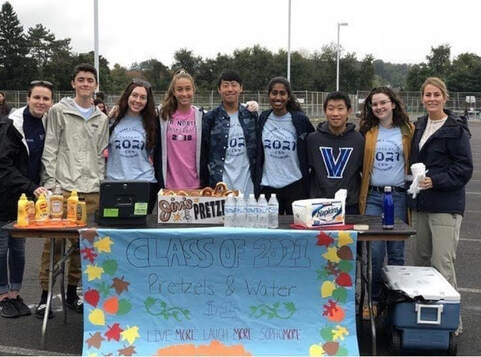 By Anushka Rajmohan Student government is a mystery to many in the student body, since many of their responsibilities are fulfilled behind the scenes. Due to this, many students do not know the extent of the student government’s various jobs and the great deal of commitment and school spirit required to be part of student government. Many are also not aware of the procedure for joining student government, which ensures that the students campaigning to be officers are not only qualified, but are also fit to represent their grade. Student Government “Student government” generally refers to the class officers, which include the president, vice president, treasurer, secretary, PR officer, and the SEB members. Each of these different officer positions has distinct responsibilities, but they all require massive amounts of work and energy. The class of 2021 officers, for example, committed to a weekly meeting after school and homeroom meeting on Fridays for the past year. On top of this, the officers had responsibilities of their own that they had to fulfill outside of these meetings. The president and vice president serve as the main line of communication with the principals and communicate with service providers for events, such as the DJ for the “Wemi.” It’s common knowledge that the treasurer handles the money, but the treasurer also deposits the money from the class dues the past year. The PR officer manages the sophomore class’s social media pages while the secretary handles the paperwork required by the activities office. It’s also important to keep in mind that all of these officers have other commitments outside of student government, such as sports, academics, and leadership roles in other clubs. This requires them to be highly committed to their positions and to prioritize their time. The Responsibilities As many of us already know, student government is responsible for organizing school activities and events, such as Blue and White Night, the Fall Formal, “Wemi,” and the Junior and Senior Proms. What many students do not know is the amount of work that goes into arranging these different events. For example, the junior class undertakes the Fall formal, and their duty is to organize every aspect of the dance--a tremendous responsibility to say the least. Mr. Diehl, the junior class adviser, summarizes this enormous task perfectly: “[The junior class] coordinate[s] the efforts of all [Student Government] on set up night, but that one eight-hour period of activity is the culmination of many weeks of planning by twenty to thirty people.” Many do not realize this hard work that all of student government contributes to in order for the entire student body to enjoy three to four hours of dancing and eating. Not only do the officers have this enormous--and honorable--task, but they also have to fund these activities and events themselves. In order to raise funds, the officers must participate in numerous activities throughout the school year, as Ms. D-V, one of the two class advisers for the sophomore officers, explains: “They are responsible for raising money for the class--by organizing and running dances, by participating in fall festival activities, by running the snack shack at football games, by manning the school store, by running senior breakfast every morning, and by sundry other activities they design, organize, and run.” The multitude of activities that they organize and run themselves requires a great deal of time and energy on behalf of the officers. Moreover, the money raised by these activities all goes towards activities such as Senior Prom, graduation, and the highly anticipated Disney trip. In addition to this, the officers of student government also listen to the input of the student body to initiate all kinds of changes in the school. However, these kinds of changes need to be approved by the school administration and school board, which is why many popular requests for reforms may not occur. However, the changes that do end up happening are usually widely requested by students, but sometimes go unnoticed when the school actually institutes them. This year, for instance, the officers can be credited for getting signs to better control traffic in the parking lots, hand sanitizers in the cafeteria, and better cleaning in the bathrooms. In addition, student officers, more specifically the class of 2021 officers, were responsible for the reinvigoration of the Columbine Memorial Garden. The Challenges Aside from the numerous commitments the officers have to make, there are also other difficulties that come with the role of an officer. One of the more frequently mentioned challenges is the criticism that they receive from their fellow students. Sanjana Harihar, the treasurer of the class of 2021 for the 2018-2019 school year, admits, “There is usually some criticism about the events. I think it is hard to satisfy everyone.” These criticisms range from complaints about the food and music at dances to a lack of changes in the school. Since many don’t notice the changes that do occur, they believe that the officers don’t accomplish much. Another common challenge that the officers face is while organizing school dances. Richard Fang, who served as the vice president for the sophomore class for the 2018-2019 school year, comments on this: “Sometimes it is difficult organizing the events to make them fun while also affordable. We have to contact DJs to get good pricing, get good decorations, food, etc.” This pressure is especially heightened when the student body often complains that the food and music weren’t good without realizing the reasons behind them. Most students are not aware of what it really means to be part of student government. The tremendous work that they commit to, the changes that they help initiate, and the pressures that they face are all often unrecognized by the student body. Although these officers don’t receive enough credit for all the work that they do for their fellow students, they still continue to do all that they can to improve the school for everyone--an admirable endeavor.  By Will Sohn Many juniors have already obtained their driver’s license and those who haven’t done so (namely hesitant juniors, sophomores, and even freshmen) are eager to get their driver’s license sometime in the near future. For those particular students, My Turn To Drive School now offers local students a newer, more convenient testing option right here in Newtown. Wanting to enhance customer service, PennDOT decided to authorize certain business partners to become eligible to provide driver's license testing services to the residents of Pennsylvania. After two years of pushing for approval, My Turn To Drive School was accepted into the program and became a certified third-party tester. The school specializes in teaching new drivers driving techniques and educating them on the rules of driving. I recently obtained my license at the DMV about one month ago and was looking for a closer and easier option at the time. I spent nearly four hours there waiting for my turn to receive my license (not including my test) and nearly the same wait when I went there to get my permit. Earlier, when I tried to reschedule my test, the PennDOT Driver License Centers was already booked for the next month. In fact, the PennDOT centers may be booked up to 3 months or more in advance, which makes it difficult for someone to get a license quickly. There are even stories of students having to wake up extremely early in the morning just to look for newly released appointment times online. Securing a time to test and reschedule exams among nearly a hundred other people at the driving center throughout the day is always a hassle. Thankfully, My Turn To Drive School is the solution to both of these problems. As a third-party testing service, they offer the convenience of securing a testing time in a few days compared to a few weeks. They pride themselves on their outstanding customer service that actively helps students find a time to test. They are one of the only 5-star-rated driving schools in the region. While there is no charge for taking a driving skills test at a PennDOT Driver License Center, third-party business partners like My Turn To Drive School charge a market-driven fee for administering the test. The fee to take the license test is $95 at their Bucks County location. All of their examiners are PennDOT-certified and the test itself is similar to what you would receive at a PennDOT center. My Turn To Drive School also offers classroom instructions for students at age 15 with or without a permit. The school is certified by the Pennsylvania Department of Education to provide drivers instruction in Pennsylvania and has been doing so in other locations for many years. The school also offers behind-the-wheel lessons for students who are at least age 16 and possess a valid Pennsylvania learner's permit. My Turn To Drive School provides service for several essential steps throughout the process of preparing and taking your driver’s exam. I encourage students who have not received their license yet to consider the convenience of skipping the DMV and testing much faster at an immediate location. You can begin driver's license testing at their Bucks County site at 62 Walker Lane in Newtown, which is located in the Newtown Business Park (close to Newtown Athletic Club). Go to www.myturntodriveschool.com or email [email protected] to learn more about My Turn To Drive School, their contact info, and their mission statement. 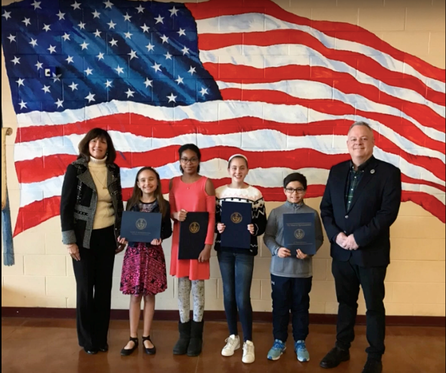 Winners of “A Day On” Essay contest pictured with State Representatives Wendi Thomas and Perry Warren Winners of “A Day On” Essay contest pictured with State Representatives Wendi Thomas and Perry Warren By Sophia Kim On January 21, Council Rock students enjoyed a day off from school for Martin Luther King, Jr., Day. Many students may have stayed at home to relax and take advantage of their free Monday, but in remembrance of the great service that Dr. King did for our country, several clubs in Council Rock North were active on MLK Day. This year marked the 13th year Council Rock has held its annual CR CARES MLK event at CR South. Pennsylvania state Representatives Wendi Thomas and Perry Warren attended the event to recognize several students for their essays on the meaning of the special day. An additional 300 or more students from around the district worked together in a multitude of activities including sorting food, writing cards, and drawing pictures to send to first responders and those serving in the U.S military, making blankets, and assembling CR CARES packages. Members of CRN’s National Honors Society volunteered to help out with various aspects of the event. The students’ work assisted the Bucks County Emergency Shelter, Penndel Food Cupboard, Wrightstown Food Cupboard, Delaware Valley Veterans Home, and the military deployed at Camp Manio, Iraq. The event seemed to instill enthusiasm and hope into many of the students involved. Ally Voutsinas and Julia Goroshko, two of the NHS members who volunteered at the event, felt fulfilled by what was accomplished that day. Voutsinas helped elementary students write to first responders and U.S soldiers, and “came out of the event proud of our community for wanting to give back so enthusiastically.” She was happy to see that many students took the time out of their day off to come to the event. Goroshko also saw the event as a wholesome experience after helping the children make blankets. While surrounded by the young students, she felt nostalgic for her elementary days and recalled that the kids were “so sweet and a pleasure to be around.” Each year, this event not only allows high-schoolers to interact with elementary students, but also serves as a valuable opportunity for students to support the community they live in and learn about the people around them. Goroshko mentioned that “...kids growing up should have knowledge of and understand everything that [Dr. King] did for our country.” Thus, MLK Day is a chance for us to stop thinking of ourselves and instead start thinking of how we could improve our society. Voutsinas reflected that all of us at Council Rock are very fortunate but often times take our lifestyles for granted. “MLK day gives us a chance to truly give back to our community.” Throughout the week before MLK Day, the American Red Cross Club also served the community by collecting lightly used winter clothing pieces. Club members placed bags in each homeroom for clothing donations such as hats, gloves, and scarves for those in need. Finally, several members of CRN’s Diversity Advisory Committee will be attending the 6th annual Bucks County Teen Peace and Social Justice Summit conference in honor of MLK Day. Because of weather conditions, the event was moved from January to March, so if you are interested in attending, be on the lookout for new information. Various speakers will discuss race and prejudice. The conference is open for 7th through 12th graders. Perhaps the best way to honor Dr. King and his message of service, though, is to get involved yourself. You can help out your community in a number ways. Consider donating food or clothing to organizations such as the American Red Cross, volunteering at facilities such as soup kitchens, or just being considerate of and respectful to your peers. Also, consider volunteering at next year’s CR CARES event at CR South. Each day is a new opportunity to remember Dr. King’s values and continue his legacy through your actions, big or small. 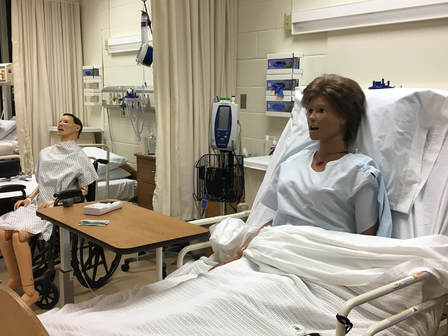 Students in MBIT’s Medical & Health Professions program practice their skills on state-of-the-art simulation mannequins using the same tools and equipment as real doctors and nurses. Students in MBIT’s Medical & Health Professions program practice their skills on state-of-the-art simulation mannequins using the same tools and equipment as real doctors and nurses. By Margaret Zheng Have you ever had a class where you just kept wondering, “When am I ever going to use this?” Do you have “ants in your pants” when listening to a lesson in class and would rather be learning by doing? Are you passionate about computers or cosmetology or cooking or cars and wish that you could dive deep, beyond the few electives offered at North? Middle Bucks Institute of Technology (MBIT), located in Jamison, is a school for career and technical education that enrolls 10th-12th graders from four local school districts: Central Bucks, Centennial, New-Hope Solebury, and Council Rock. Its three-year programs include a wide range of career areas, such as Web Design, Public Safety, Sports Therapy, Early Childhood Care & Education, Commercial Art & Advertising Design, Culinary Arts, and Engineering. CRN students who attend MBIT spend half of their school day (either morning or afternoon) at MBIT and half at North, so they still have to take non-elective classes like English and health. But when they’re at MBIT, they learn career-oriented skills through real hands-on practice and even earn numerous industry certifications along the way. To learn more about MBIT for this article, I attended their Open House one evening in November. I got to speak with several current MBIT students from various high schools, some teachers and administrators, and even an MBIT graduate. They all were enthusiastic about their school, not just about how well it prepares teens for a job in their chosen career areas, but also about its welcoming social atmosphere. “There is no drama -- save the drama for your mama,” said Abagael Shaffer, a CRN junior studying cosmetology at MBIT. When all your classmates are just as passionate as you are about your hands-on, collaborative classes, naturally you grow to enjoy each other’s company. As for the teachers, Shaffer commented, “They’re always on your side.” From what I observed, it seemed that every adult at MBIT cared a lot for their students’ success, not just at MBIT, but also their post-secondary endeavors. “Do you want to be ahead of the [other] students in your nursing courses?” asked Dante Tomkiel, senior at Central Bucks East, when telling me why students should consider MBIT. She’s a student in MBIT’s Medical & Health Professions program and aims to go into nursing. At the Open House, she showed me the state-of-the-art simulation mannequins that the students practice on, listening to heartbeats and wheezes with a stethoscope and performing other medical operations. They even are required to have conversations with their “patients” (with teachers filling in the missing dialogue), as social skills training is key for working in a service field. The teachers themselves have worked in health professions and are eager to share their knowledge and experience with the enthusiastic students. Said Tomkiel, “They know what they’re teaching because they have performed it already.” According to Nick V., who graduated from William Tennent HS and studied Networking & Operating Systems Security at MBIT, training at MBIT can sometimes be so comprehensive as to make additional college study superfluous. “This class taught me everything that I do every day,” he said. “[It] is what made me all my money.” Most of the students in his program do not seek higher education, simply because all the certifications they receive at MBIT make them more than ready for the job market. The one former classmate that he recalls going to college now sorely regrets it as a waste of money and time, as he already learned everything he needed at MBIT. However, in most of MBIT’s programs, the majority of students do pursue some higher education, such as an associate’s or bachelor’s degree. Those who do often take advantage of MBIT’s associations with area colleges such as Bucks County Community College and Bloomsburg University, which allow you to transfer credits from MBIT to your college studies, saving you time and money for your degree. But what if you have your heart set on an academic challenge and have dreamed of a prestigious college or even of graduate school? Kathryn Gingolaski, senior at Central Bucks South and an MBIT student in Medical & Health Professions, shows that smart overachievers can thrive at MBIT. Through her MBIT years, she has participated in MBIT’s chapter of SkillsUSA, a national association supporting technical and skilled service education, and this school year she serves as a SkillsUSA PA State Officer, representing technical schools across the state. Basically, she explained to me, SkillsUSA is like a Student Council, except substantially more involved in leading the school and in advocating for better education. “I went to Washington D.C. to talk to Brian Fitzpatrick about advancing career and technical education,” she told me with pride. (Think about having that on your college resume!) After MBIT, Gingolaski hopes to attend a four-year college and eventually go to medical school to become a doctor. She is more than ready to shoot for her dreams, having studied health sciences at MBIT since tenth grade and taken advanced Honors and AP classes at her home school. If you’re an underclassman itching for something other than the same-old high school classroom experience - if you want to learn practical things that you’ll actually use in your career - if you’re enticed to accelerate your path towards your dream career, then consider applying to MBIT for next school year. 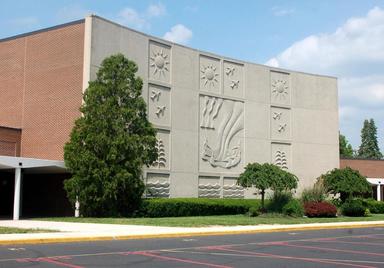 By Will Sohn As a new school year begins, classes, sports teams, and clubs begin as well. These clubs are usually the brainchildren of you, the students, and one of our newest clubs is no exception. The Jewish Community Club focuses on community service and other fun projects. Kyle Pave, the founder of the club, said, “I created it to help people in need...I was definitely correct in thinking that this would be a rewarding experience. A special thanks to the Shemtovs and Mr. Greenockle for making this happen.” The Jewish Community Club looks to support people through different activities such as various food projects, 5k runs for cancer, fundraisers, and other projects. They are also partnering with Friendship Circle, an organization that works with special needs kids. The club will also begin to offer LINCS credits soon. Students who are interested in joining different national honor societies are required to have a certain number of LINCS hours. Regardless of your grade level, it is a great idea to earn more hours. However, you shouldn’t join this club simply for service credit; this club is a worthwhile experience and will be productive when helping others. You can find meeting dates via the morning announcements and/or flyers around the building. It is important to note that you do not have to be Jewish to join this club; you only need a desire to help others and an interest in working with your peers to make that happen. Students should take advantage of this rewarding experience and join the Jewish Community Club this upcoming school year. 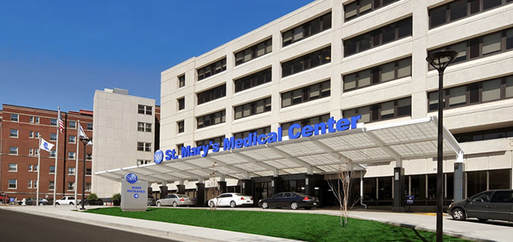 By Will Sohn School is ending soon and summer will soon be upon us. These upcoming months will be packed with lots of activities, events, and summer work for many people. As summer approaches, many students also are looking for more local volunteer opportunities. Students know that volunteering is a great way to help in the community and to earn LINCS credits for the upcoming school year, but what are LINCS? LINCS stands for Learning in Neighborhood Community Service. Council Rock School District has a long tradition of community involvement and believes that students will be positively impacted by the service that they can offer to the community. Although the school district does not require LINCS hours for graduation, they highly encourage students to participate in volunteer services. Students should be aware of the different criteria of the LINCS program. Unlike graduation requirements, LINCS hours are a prerequisite for NHS (45-50 hours depending on when you apply). CRSD does acknowledge on transcripts and diplomas those students who have accumulated over 60 service hours. Students who have done this will also be eligible for different scholarships and service learning awards sponsored by local community organizations. Even though LINCS hours are not required, students should still volunteer in order to enrich themselves and be rewarded for their work. Before you volunteer, LINCS organizations must be pre-approved and verified through the school. There is a link on the North website that provides a list of pre-approved LINCS organizations and district opportunities. Students can earn LINCS credit through events such as fall festival, different clubs that help non-profit organizations, fundraisers, and other school events. Students can also volunteer at the district elementary and middle schools or through school-sporting community services. In addition to district opportunities, many pre-approved local organizations offer LINCS hours. Local churches and synagogues in the Bucks County area are already verified through the school. Libraries are also providers; I volunteered last summer at the Northampton Library in Richboro and received credit throughout the summer. This year, I am volunteering at St. Mary’s Hospital with several other students from Council Rock North in order to complete my service credits. As a fellow hospital volunteer, sophomore Tejas Banhatti spoke on what this summer would be like: “I think that this is a great way to earn hours for the upcoming year ... but it is more than just about earning hours, it’s also about giving back to the community. It will be a lot of work, but it’ll be worth it.” While the number of hours required to join NHS or receive recognition on your diploma and transcript may seem overwhelming, it definitely does not have to be completed over one summer. Students can accumulate hours gradually throughout their four years. Moreover, a wide range of both district and local volunteer opportunities exist for Council Rock North students; we should take advantage of this opportunity and enrich ourselves and help our communities. 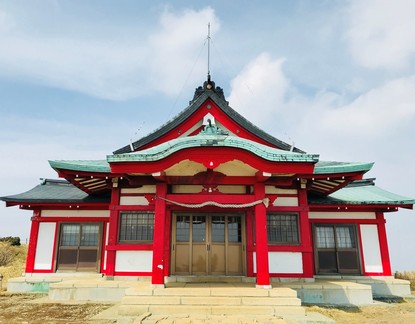 By Sofia Adams and Amelia Spring On March 24, 2018, forty Council Rock North students began their long and exhausting journey to Tokyo, Japan, as part of the school's art program. Over the next seven days, they visited four breathtaking cities including Tokyo, Hakone, Kyoto, and Osaka, and embarked on an amazing journey filled with Japanese culture. After a full 24 hours of travel, the students and four chaperones arrived at the Tokyo airport. First, the students visited various places in Tokyo. Beginning in the Harajuku district, a popular street, students soaked in shops selling mainstream Japanese fashion, loud and colorful candy shops, and enormous groups of Japanese teenagers on their spring break. Next, they went to the Tsukiji fish market. Imagine visiting Philadelphia’s Reading Terminal Market but being unable to move due to crowds of people. This market sold a variety of food from Tamago, a type of egg on a stick, to all kinds of sushi and raw fish, or sashimi. Tokyo was just one of the many astounding places the students visited that week. The second place the students visited was Hakone, a national park west of Tokyo that is known for its hot springs and beautiful views of the volcanic Mount Fuji. The kids rode a Gondola to the top of a smaller mountain and were able to see Mount Fuji clearly because the constantly changing weather remained clear. Atop the mountain sits the Hakone Shrine, a Shinto shrine with a red gate, or torii, overlooking Lake Ashi. Next, the kids boarded a ferry and sailed across Lake Ashi. After the sailing, the kids went to Owakudani, a town nearby. Owakudani is known for the unique, black hard boiled eggs. The eggs are boiled in natural hot springs on volcanic mountains. The springs contain sulfur and iron, which turn the eggshell black. While these eggs are completely safe to eat, they are said to grant a person seven more years of life. A little further south of both Tokyo and Hakone was the group's next stop, Kyoto. One bullet train trip later, the students were in Japan’s former capital, Kyoto. Nara Park, otherwise known as Deer Park, is a place straight out of a fairytale. Here, students could pet and feed wild deer that roam the area. These deer are unafraid of people and friendly as long as you do not taunt them. To feed the deer, one must hold the deer cracker above the deer’s head and wait until it bows three times to give the cracker to them. Tōdai-ji temple, near Nara Park, was the group’s next destination. The temple houses the world’s largest bronze Buddha statue. Tōdai-ji temple was once one of the powerful Seven Great Temples of Nara. The students also visited and toured Sanjūsangen-dō temple. The temple contains one thousand life-size statues of the Goddess of Compassion, which stand on both the right and left sides of the Thousand Armed Kannon. In Kyoto, students witnessed an authentic Japanese tea ceremony, which consisted of the creating, serving, and drinking of matcha green tea. Finally, students watched a Kimono fashion show that displayed seven very distinct and unique kimonos. After approximately one hour on a bus, the students traveled to their final destination. The last, but certainly not least, location the students traveled to was Osaka. Osaka is well known for the 16th-century shogunate Osaka Castle, which has undergone several restorations. The castle is surrounded by a moat and park with plum, peach, and cherry-blossom trees. The last landmark the students visited was the Umeda Sky Building. This structure is the nineteenth-tallest building in Osaka Prefecture. It consists of two forty-story towers that connect at their two highest stories. People are welcome to walk on top of the building at 568 ft in the air. After one canceled flight, a night spent sleeping in an airport, and over 36 hours of complete travel, the forty students and four chaperones arrived back home at Council Rock North from an amazing seven days in Japan. The students were able to visit four amazing cities--Tokyo, Hakone, Kyoto and Osaka--in just one short week thanks to the amazing planning of Mr. Jim Biglan, CRN art teacher, and Explorica Inc., the program used to plan the educational tours. Next year, pass on staying home for spring break and set off on a fun journey to somewhere new on a school trip. |
Archives
June 2022
Categories |
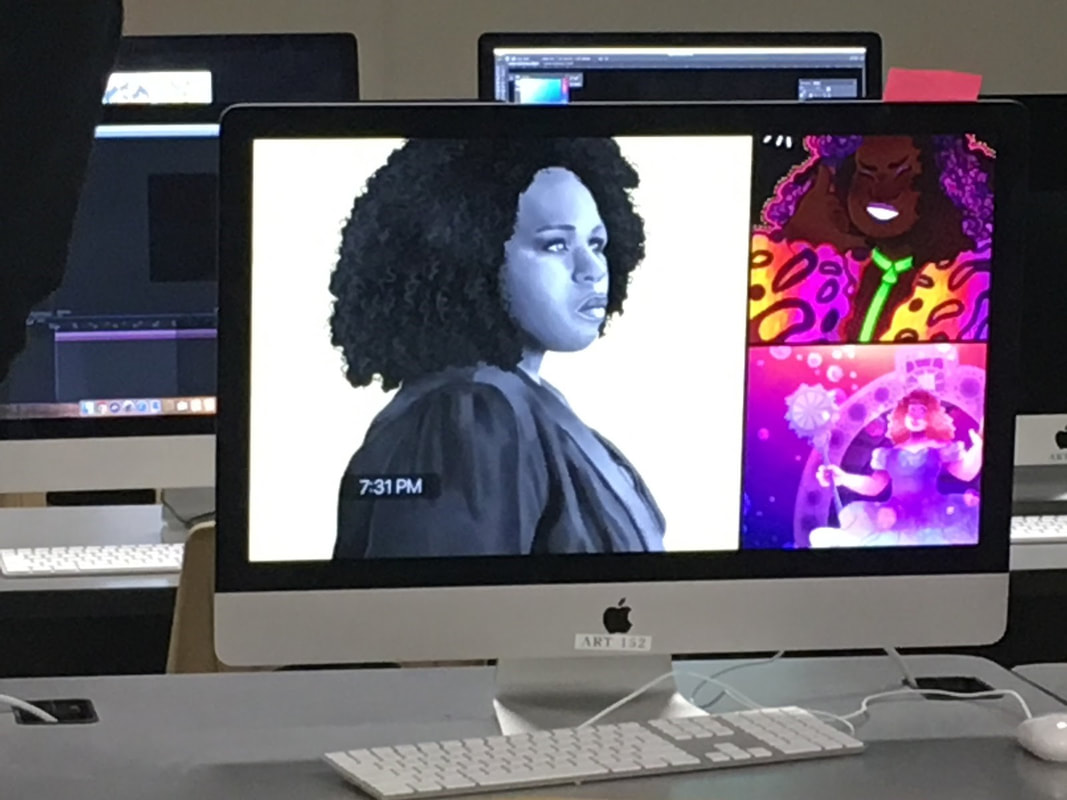
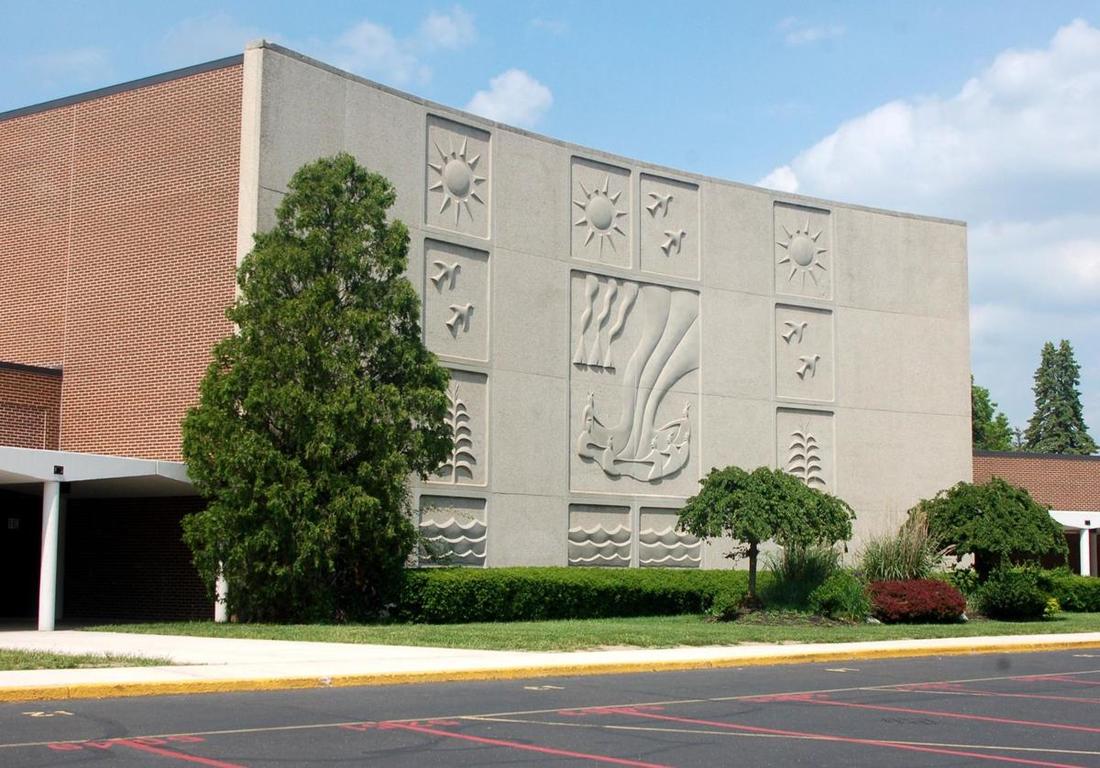
 RSS Feed
RSS Feed
